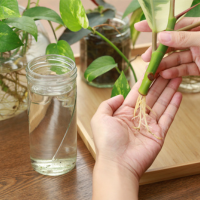4th June 2024
Reproduction and replication
Today we are exploring the various ways organisms reproduce and replicate, creating new generations and passing on their genetic information. We will examine the many methods of reproduction and replication and document examples in our nature journals.
Journal Together session
Session times are given in the presenter’s own timezone.
*You can use a timezone converter to check the event time in your area.
4th June, 3PM Eastern time (Canada and USA); 8 PM British Summer time.
Corina Brdar will lead a Journal Together session on the theme of Reproduction and Replication.
Nature journaling prompts and ideas
Flowers are the reproductive structures of angiosperms (flowering plants). Flowers have developed different characteristics according to their environment and the pollinators that have evolved alongside them. A fun learning activity is to dissect a flower and see if you can draw and label the parts. This interactive diagram will help you get familiar with the parts before you try it in your nature journal. The male parts of a flower are called stamens and are made up of anther and filament. The female part of a flower is called a pistil and is made up of stigma, style and ovary. Do this exercise several times with different types of flowers to understand more about the diversity of flowering plants.
Courtship displays are animal behaviours that are designed to attract a suitable mate. Animals may dance, show of their plumage, vocalise different sounds, or even collect and display treasures for their potential mate. Satin bowerbirds in Australia will make a collection of blue objects which they display around a ‘bower’ which is like a stage on which the birds move and vocalise to impress their mate. Learn more about satin bowerbirds with this article by the Australian Museum. What kinds of courtship displays have you noticed in animals in your nearby nature? Document these behaviours in your nature journal in your own way. You might like to draw a comic strip showing the steps in a courtship ritual for your chosen animal.
Spores are used for reproduction in many different organisms including some algae, fungi and non-flowering plants. Have you ever noticed this feature of the lifecycle in an organism in your nearby nature? Take some time to turn over a fern frond and see if you can see spores on the underside. You could use a magnifying glass or other magnifying tool to look closely at the spores and describe them into your nature journal. Botanic gardens are good places to find a variety of ferns to study.
Another way to investigate spores is to create a spore print with mushrooms. This video by the New York Botanical Gardens will show you how. You can make a spore print directly on the pages of your nature journal.
A pollinator is an organism that moves pollen from one part of a flower to another (or to another flower) to aid in fertilisation. Bees, butterflies, moths, birds and bats can all pollinate different flowers. Spend some time observing pollinators. Record the types of flowers they visit and how they interact with the reproductive structures. Can you see how the organisms are adapted to the particular flowers they visit? How could show these interactions in your nature journal?
Asexual reproduction involves a single organism producing offspring that are genetically identical to itself, without the involvement of gametes from another organism. In the garden, it is possible to propagate some plants from cuttings, not just from seeds. This article by Sustainable Gardening Australia explains more about this process. The offspring that are propagated this way are genetic clones of the parent plant. In animals, parthenogenesis is a process by which some animals can reproduce asexually. Parthenogenesis involves the development of an embryo from an unfertilised egg, and it occurs in various animal species, including some insects, reptiles, and amphibians. Can you find examples of asexual reproduction occurring in your nearby nature?
Organisms use different reproductive strategies to ensure successful offspring. Some animals, like elephants, have few offspring but invest heavily in long-term parental care, while others produce many offspring with minimal parental care. This is sometimes referred to as r/K selection theory. This video explains more about r/K selection. Choose two different organisms with distinct reproductive strategies. Compare their life cycles, focusing on reproductive processes and offspring development.







